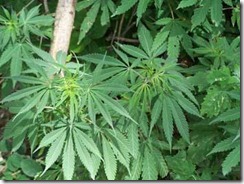Mumbai, Aug 4 : The terrain was difficult. The kidnappers were kind. With two fractured toes and an injured leg, Vilas Bardekar, senior forest officer of Maharashtra cadre, made his way through endless rivers, streams, waterfalls, valleys, fields and jungles.
Mr. Bardekar was released on Sunday from the captivity of suspected cadres of insurgent National Democratic Front of Boroland (Ranjan Daimary faction) who abducted him 83 days ago.

Freedom at last: Vilas Bardekar, senior forest officer, who was released in Assam on Sunday by the National Democratic Front of Bodoland after a two-and-half-month ordeal. He is coming out of Mantralaya after meeting the Forest Minister. Photo: Vivek Bendre
Speaking to journalists here on Tuesday, Mr. Bardekar said the cadres never placed any demands before him. “They said they wanted a Boroland, but were not clear if they wanted a separate State or country. They were full of spite for the Assam government, whom they accused on several injustices.”
“They were young boys between 19 and 26 years. They were well-behaved and took good care of me. [Occasionally,] they checked if I had fever.
On one occasion, two of them even saved my life when I had lost my balance trying to cross a surging river.
The slopes were steep, there were leeches and the mud was sticky. They held onto me and never let go. That's when I felt, those who can save my life can never kill me.
I was hopeful of a release. An apprehension of approaching military forces would keep us on the move. We did not take the same road twice,” he recalled.
Around six to 12 persons accompanied Mr. Bardekar as they went from camp to camp, which was headed by one leader.
Mr. Bardekar was in Assam's Deomara village to do research on butterflies when he was abducted. “Around 8 p.m., I and my guide were looking at some pictures of butterflies when all of a sudden a bunch of people came and dragged away my guide. They asked, ‘Are you going to write about this village?'”
Then, Mr. Bardekar felt a blow of an AK-56 rifle land on his leg. “I thought there was a misunderstanding. They left the guide and took me. We crossed rivers and fields and reached a jungle. I could not walk and I had hurt both me legs. They administered an injection,” the officer said. The captors had mistaken him for a journalist.
Mr. Bardekar's release came as unexpectedly as his capture. “They never spoke to me before the release. The day before, they said, ‘Tomorrow you have to go [downstream].' They left me at Batasipur railway station and told me to get going.”
During the period when Mr. Bardekar was in captivity, Sudhakar Suradkar, his relative and a retired IPS officer, was coordinating with various agencies for his release. While Mr. Suradkar categorically denied that any ransom was paid, he refused to throw light upon the grounds for release “in the interest of national security.”
Mr. Bardekar's abduction came when the monsoon session of the State Assembly was going on. The Opposition had alleged that a ransom was being demanded from the officer's family.
“This is a sensitive issue. The State's stand was clear that no ransom would be paid lest it sets a trend. Various agencies all over the country – the CID, IB, and the local police in Assam and Arunachal Pradesh – were coordinating on the issue.
We had public sympathy. Students in Assam went on a strike demanding his release. Various representations were made to the government. The intention was to get him back safely.
Pressure was built up consistently through negotiations. They felt by keeping Mr. Bardekar, their lives would be at stake. A military [crackdown] was not a good idea. All the State governments involved have done all they could.”
On his part, Mr. Bardekar too challenged the “insurgents.” “I asked them if they were doing anything courageous by kidnapping me. But they never answered,” he said. On Tuesday, Mr. Bardekar met Maharashtra Chief Minister Ashok Chavan, who, he said, expressed relief on his safe return.
Asked if he would be penning his experiences, Mr. Bardekar said he had been keeping a daily record of his travails; thanks to a request for pen and paper which his captors granted.





 Northeast India is awash with arms (Pic: Subhamoy Bhattacharjee)
Northeast India is awash with arms (Pic: Subhamoy Bhattacharjee) The area is home to numerous rebel groups all requiring arms
The area is home to numerous rebel groups all requiring arms Many of the weapons are believed to have originated from China (Pic: Subhamoy Bhattacharjee)
Many of the weapons are believed to have originated from China (Pic: Subhamoy Bhattacharjee)






